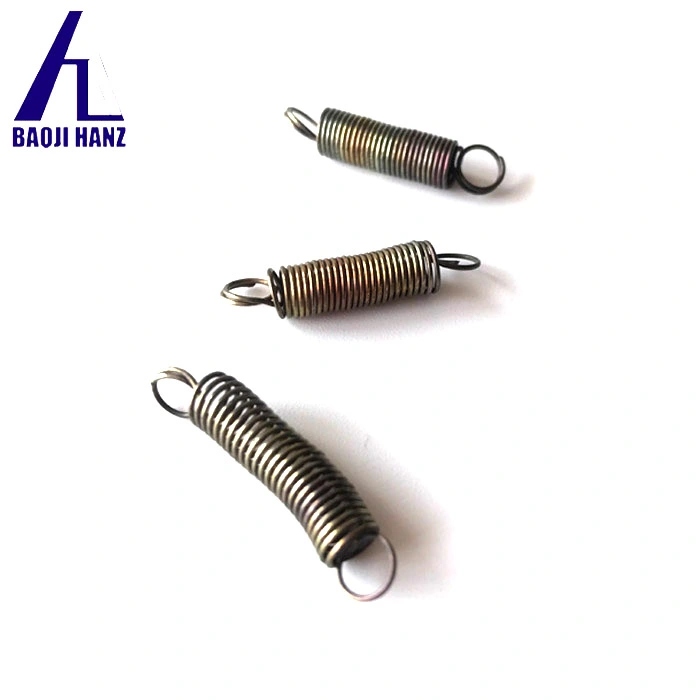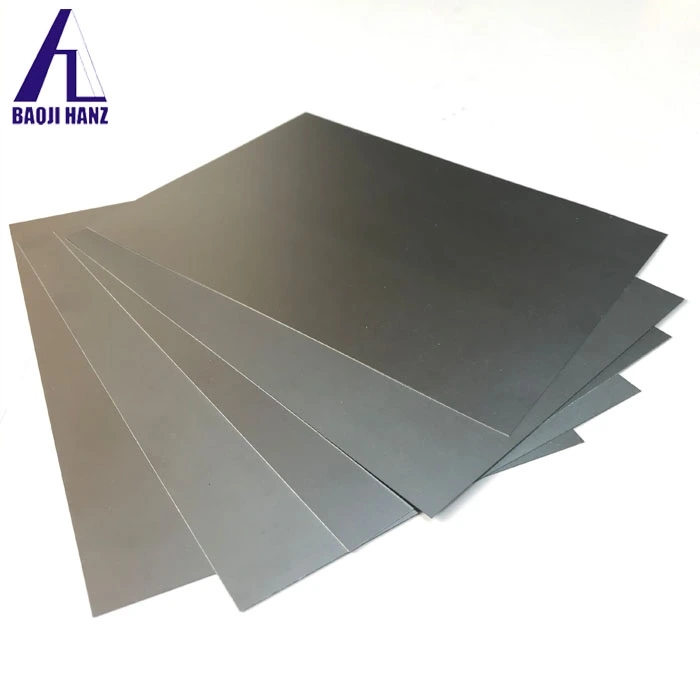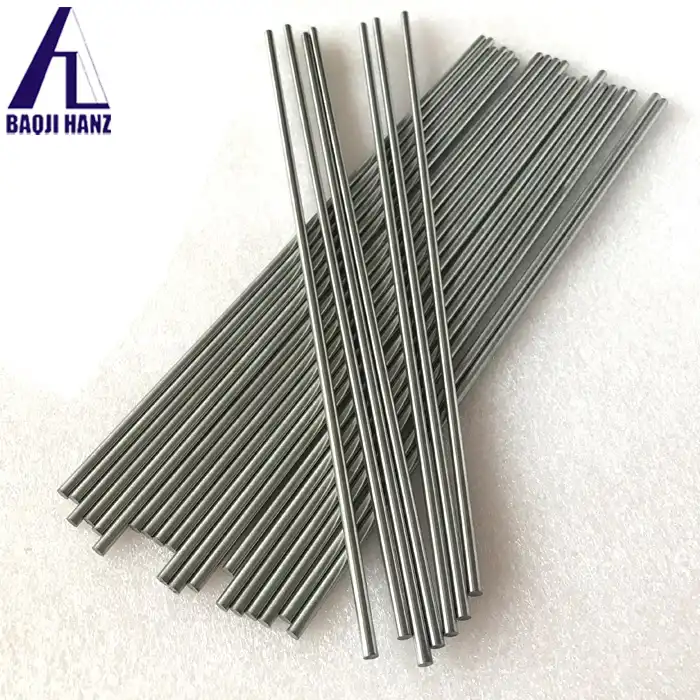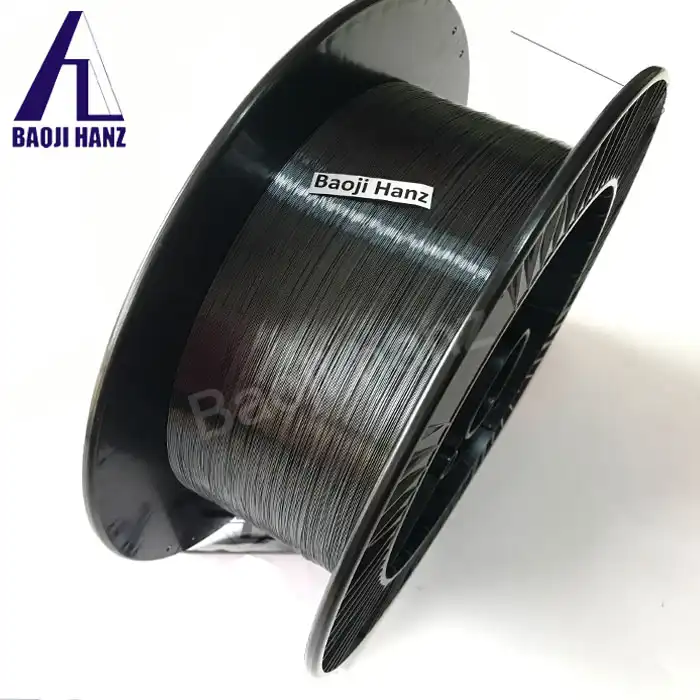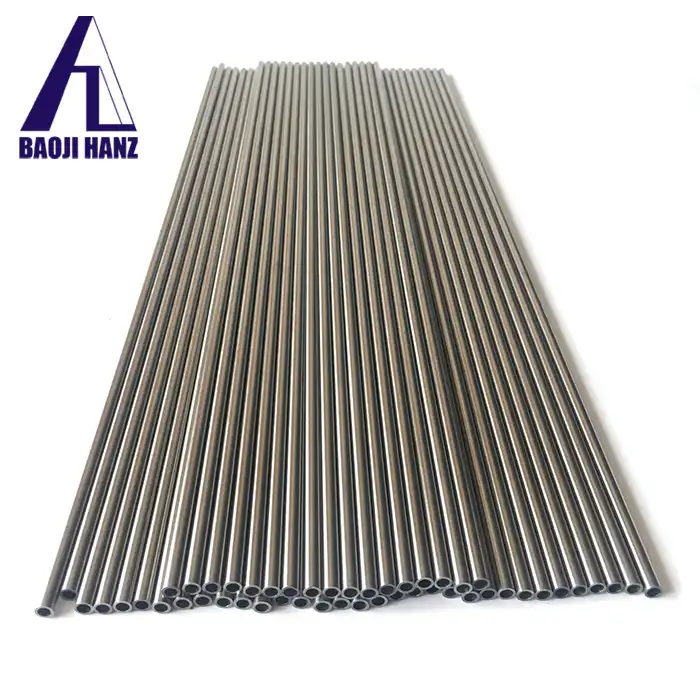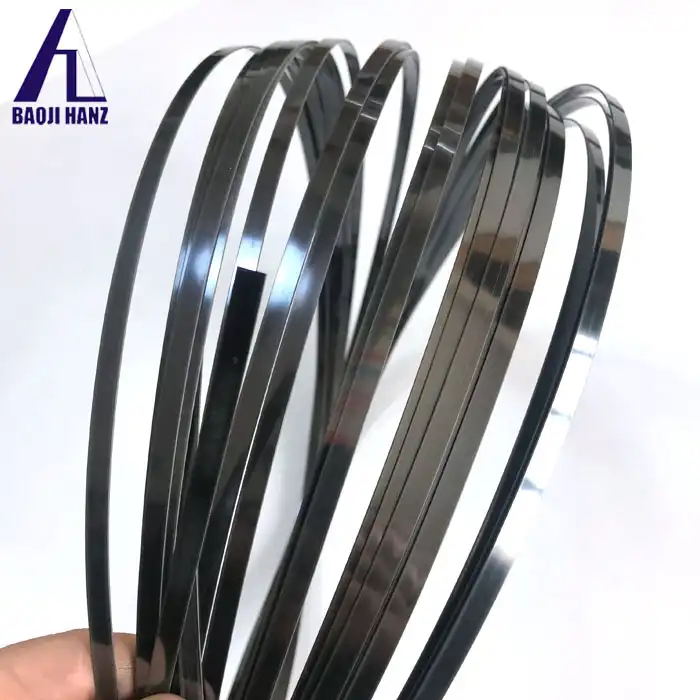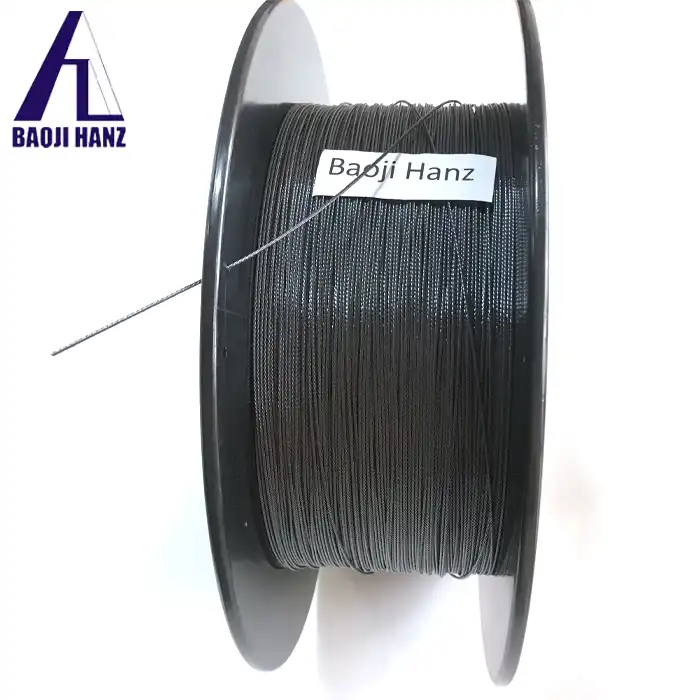What is an OEM Nitinol compression spring?
2025-02-22 00:08:08
OEM Nitinol compression springs represent a cutting-edge innovation in the world of shape memory alloys. These specialized springs, crafted from Nitinol (nickel-titanium alloy), offer unique properties that set them apart from conventional spring materials. With their ability to return to a predetermined shape when heated, OEM Nitinol compression springs find applications in various industries, from medical devices to aerospace engineering. This blog delves into the intricacies of these remarkable components, exploring their characteristics, manufacturing processes, and diverse applications. By understanding the potential of OEM Nitinol compression springs, we can appreciate their role in advancing technological frontiers and solving complex engineering challenges.
Understanding OEM Nitinol Compression Springs
Composition and Properties of Nitinol
Nitinol, the material at the heart of OEM Nitinol compression springs, is an equiatomic alloy composed of nickel and titanium. This unique composition bestows upon Nitinol its extraordinary shape memory and superelastic properties. The alloy's crystal structure undergoes a reversible phase transformation between austenite and martensite, enabling it to "remember" and return to its original shape when subjected to specific temperature changes. The shape memory effect of Nitinol allows OEM compression springs to be deformed at lower temperatures and then recover their original shape when heated above their transformation temperature. This phenomenon occurs due to the realignment of the crystal structure during the phase transformation. Additionally, Nitinol exhibits superelasticity, allowing it to undergo large deformations without permanent damage, making it ideal for applications requiring repeated compression and expansion cycles. OEM Nitinol compression springs also boast excellent corrosion resistance, biocompatibility, and fatigue resistance. These properties make them particularly valuable in medical applications, where they can withstand the harsh environment of the human body and maintain their functionality over extended periods. The combination of these unique characteristics sets Nitinol apart from traditional spring materials like stainless steel or copper alloys.
Manufacturing Process of OEM Nitinol Compression Springs
The production of OEM Nitinol compression springs involves a meticulous process that requires specialized equipment and expertise. The manufacturing journey begins with the creation of Nitinol wire, which serves as the raw material for the springs. This wire is produced through a vacuum induction melting process, followed by careful heat treatment to achieve the desired properties. Once the Nitinol wire is prepared, it undergoes a precise coiling process to form the spring shape. This step is crucial in determining the spring's final characteristics, including its compression strength and shape memory behavior. The coiling is typically performed using specialized machinery that can handle the unique properties of Nitinol, ensuring consistent and accurate spring formation. After coiling, the springs undergo a series of heat treatments to set their shape memory properties. This process, known as "shape setting," involves heating the springs to high temperatures while maintaining their desired form. The specific temperature and duration of this treatment are carefully controlled to achieve the optimal balance between shape memory effect and superelasticity. Following the heat treatment, the springs are quenched to lock in their properties.
Advantages of OEM Nitinol Compression Springs
OEM Nitinol compression springs offer a plethora of advantages over traditional spring materials. Their shape memory effect allows for compact designs and unique functionalities that are impossible with conventional springs. For instance, these springs can be compressed and remain in that state until activated by heat, enabling novel deployment mechanisms in various devices. The superelastic nature of Nitinol springs provides exceptional resilience and durability. They can undergo large deformations without experiencing permanent damage or loss of functionality, making them ideal for applications requiring repeated cycles of compression and expansion. This property also contributes to their extended lifespan, reducing the need for frequent replacements in critical components. Another significant advantage is the biocompatibility of Nitinol. OEM compression springs made from this material are well-suited for medical implants and devices that come into direct contact with human tissue. Their corrosion resistance further enhances their suitability for such applications, ensuring long-term stability and safety within the body. Additionally, the ability to fine-tune the transformation temperature of Nitinol springs allows for precise control over their activation, opening up possibilities for temperature-sensitive applications.
Applications of OEM Nitinol Compression Springs
Medical and Dental Applications
The medical field has embraced OEM Nitinol compression springs for their unique properties and biocompatibility. These springs find extensive use in orthodontic devices, where their superelasticity allows for the application of consistent, gentle forces to move teeth. Nitinol archwires in braces provide more comfort and efficiency compared to traditional materials, reducing treatment times and improving patient experiences. In cardiovascular medicine, Nitinol compression springs play a crucial role in the development of stents and heart valve frames. Their ability to be compressed into a small diameter for insertion and then expand to their predetermined shape when deployed within blood vessels or heart chambers has revolutionized minimally invasive procedures. The shape memory effect ensures that these devices maintain their functionality even under the constant stresses of the cardiovascular system. Orthopedic implants also benefit from the unique properties of OEM Nitinol compression springs. These springs are used in spinal fusion devices, providing dynamic stabilization that mimics the natural movement of the spine while supporting proper alignment. In joint replacement surgeries, Nitinol springs can be incorporated into prosthetic designs to enhance flexibility and shock absorption, improving the overall functionality and comfort of artificial joints.
Aerospace and Automotive Industries
The aerospace industry has found innovative applications for OEM Nitinol compression springs in various systems and components. These springs are utilized in aircraft control surfaces, where their shape memory properties allow for adaptive wing structures that can change shape in response to different flight conditions. This technology contributes to improved aerodynamic efficiency and fuel economy. In satellite deployments, Nitinol compression springs play a crucial role in compact, reliable release mechanisms. Their ability to be compressed and locked in place until activated by heat makes them ideal for deploying solar panels, antennas, and other satellite components once in orbit. The lightweight nature of Nitinol also contributes to reducing the overall mass of spacecraft, a critical factor in space missions. The automotive sector leverages OEM Nitinol compression springs in advanced safety systems and comfort features. These springs are incorporated into adaptive headlight systems, allowing for rapid and precise adjustments to lighting direction based on steering input and road conditions. In suspension systems, Nitinol springs can provide variable stiffness, adapting to different road surfaces and driving conditions to enhance both comfort and handling.
Consumer Electronics and Robotics
OEM Nitinol compression springs have found their way into consumer electronics, offering innovative solutions for compact and durable devices. In smartphones and tablets, these springs are used in haptic feedback mechanisms, providing precise and responsive tactile sensations. Their small size and reliability make them ideal for use in the limited space available within modern electronic devices. The world of wearable technology has also embraced Nitinol springs. Smart watches and fitness trackers utilize these components in their clasping mechanisms, providing a secure yet comfortable fit that can adapt to changes in wrist size due to temperature or activity. The corrosion resistance of Nitinol ensures that these springs maintain their functionality even when exposed to sweat and varying environmental conditions. In robotics, OEM Nitinol compression springs contribute to the development of more advanced and lifelike movements. Their use in robotic joints allows for smooth, controlled motion with built-in shock absorption. The shape memory effect of these springs enables the creation of self-adjusting mechanisms that can adapt to different loads or environmental conditions, enhancing the versatility and efficiency of robotic systems across various industries.
Future Prospects and Innovations
Advancements in Nitinol Alloy Development
The field of Nitinol alloy development is experiencing rapid progress, with researchers exploring new compositions and manufacturing techniques to enhance the properties of OEM Nitinol compression springs. One area of focus is the fine-tuning of transformation temperatures, allowing for more precise control over the activation of shape memory effects. This research could lead to springs that respond to even smaller temperature changes, opening up new applications in sensitive environments. Efforts are also underway to improve the fatigue resistance of Nitinol alloys. By optimizing the microstructure and composition, scientists aim to create springs that can withstand an even greater number of compression cycles without degradation. This advancement would further extend the lifespan of Nitinol components, making them even more attractive for long-term applications in critical systems. Another exciting avenue of research involves the development of multi-functional Nitinol alloys. These advanced materials could combine shape memory properties with additional functionalities such as electrical conductivity or magnetic responsiveness. Such innovations could lead to OEM Nitinol compression springs that not only provide mechanical action but also serve as sensors or actuators in integrated systems.
Emerging Applications in New Industries
As the potential of OEM Nitinol compression springs becomes more widely recognized, new industries are exploring their integration into innovative products and systems. In the field of renewable energy, these springs are being investigated for use in solar panel tracking systems, where their ability to adjust to temperature changes could allow for more efficient solar energy collection throughout the day. The construction industry is also taking notice of Nitinol springs. Researchers are exploring their potential in earthquake-resistant building designs, where the superelastic properties of Nitinol could help absorb and dissipate seismic energy. This application could lead to safer structures in earthquake-prone regions, potentially saving lives and reducing infrastructure damage. In the realm of environmental technology, OEM Nitinol compression springs are being considered for use in advanced filtration systems. Their ability to change shape in response to temperature could be harnessed to create self-cleaning filters that can adapt to different pollutant loads, improving the efficiency and longevity of water and air purification systems.
Challenges and Opportunities in OEM Nitinol Spring Manufacturing
While the potential of OEM Nitinol compression springs is vast, manufacturers face several challenges in their production and implementation. One significant hurdle is the high cost of Nitinol compared to traditional spring materials. Efforts are underway to optimize manufacturing processes and increase production scales to reduce costs and make Nitinol springs more economically viable for a broader range of applications. Quality control presents another challenge, as the properties of Nitinol springs are highly dependent on precise composition and heat treatment. Manufacturers are investing in advanced testing and characterization techniques to ensure consistent performance across batches. This focus on quality assurance is crucial for the adoption of Nitinol springs in critical applications where reliability is paramount. Despite these challenges, the opportunities in OEM Nitinol spring manufacturing are substantial. As demand grows across various industries, manufacturers are developing specialized production lines and expertise in working with this unique material. This specialization is leading to innovations in manufacturing techniques, such as additive manufacturing of Nitinol components, which could revolutionize the production of complex spring geometries and custom designs.
Conclusion
OEM Nitinol compression springs represent a remarkable fusion of material science and engineering ingenuity. Their unique properties of shape memory and superelasticity continue to drive innovation across multiple industries, from healthcare to aerospace. As research progresses and manufacturing techniques evolve, we can anticipate even more groundbreaking applications for these versatile components, solidifying their place as a cornerstone of future technological advancements. If you want to get more information about this product, you can contact us at baojihanz-niti@hanztech.cn.
Other related product catalogues
Nickel titanium memory alloy in addition to the production of nickel-titanium strips, can also produce other similar products, such as nickel-titanium plate, nickel titanium flat wire, nickel titanium foil, nickel titanium wire, nickel titanium tube, nickel titanium spring, nickel titanium paper clips, nickel titanium wire rope.
|
|
|
|
|
|
|
|
References
1. "Shape Memory Alloys: Manufacturing, Properties and Applications" by Kazuhiro Otsuka and Clarence Marvin Wayman
2. "Nitinol: The Material with a Memory" by John H. Perepezko
3. "Medical Applications of Shape Memory Alloys" by L. G. Machado and M. A. Savi
4. "Superelastic Nitinol for Medical Devices" by Alan R. Pelton, David Stockel, and Tom W. Duerig
5. "Aerospace Applications of Shape Memory Alloys" by Dimitris C. Lagoudas
6. "Nitinol for Biomedical Applications" by Thomas W. Duerig, Alan R. Pelton, and Dieter Stöckel
